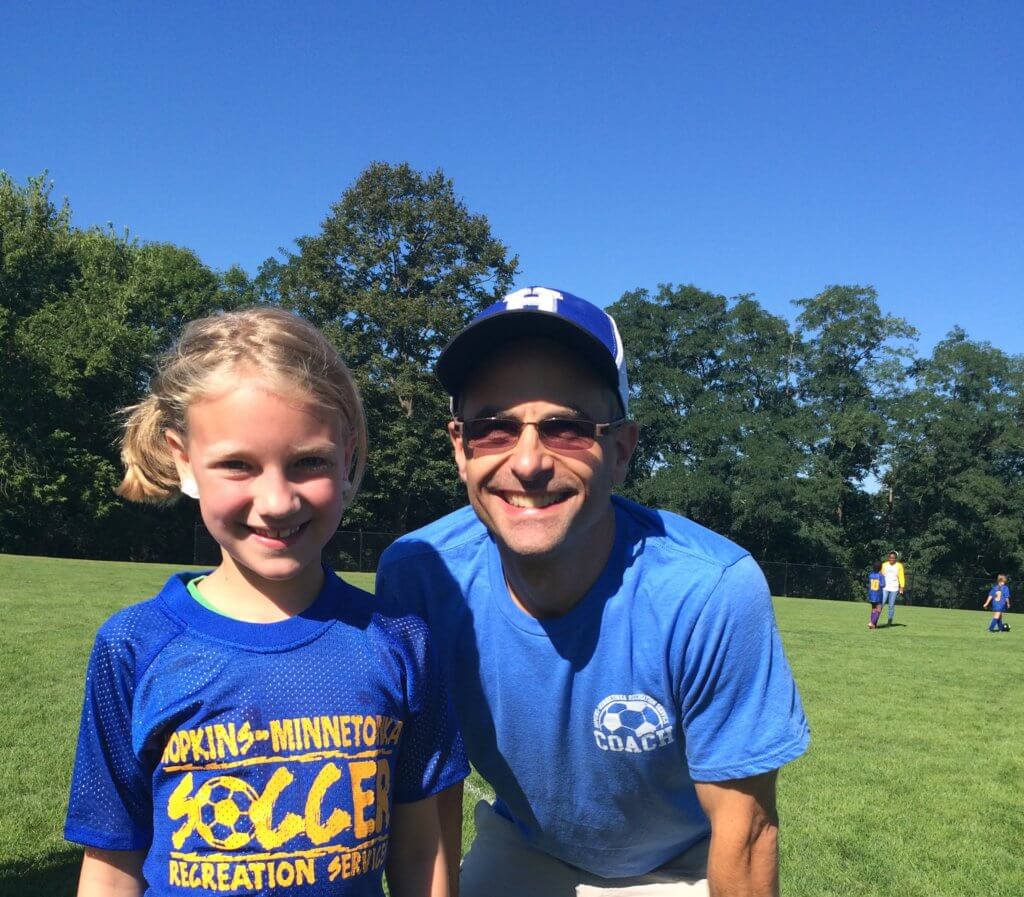
What is a coach?
Someone who supports you, someone who challenges you, someone who helps you improve?
This picture was taken last Saturday of my daughter at her soccer game with her coach, Charlie Firth. Coach Firth does all those things, he supports, challenges and helps her to be a better player.
Coaching can have a key role in communication too.
In the past few blogs I have discussed how paying attention to the basics and those best practices that have worked for the high performers impact the physician communication. This week I want to talk about what I believe to be the most powerful tool for improving physician communication.
In 2011, Atul Gawande, MD, MPH, a surgeon, public health researcher, and writer for the New Yorker, wrote an article in the magazine that highlighted the notion of coaches for physicians. http://www.newyorker.com/magazine/2011/10/03/personal-best Executives and top athletes have coaches, so why not physicians?
It was such fortuitous timing that the release of this article coincided with the advent of my opportunity to start coaching physicians on communication. As my team embarked on coaching an initial cohort of 75 physicians, we were able to reference this article as a starting point in recruiting participants.
It has turned out to be one of the most profound experiences of my career. Observing the physician/patient encounter is such sacred space, and yet it’s proven to be an extremely powerful modality for making changes and having lasting impact.
I now have had the privilege of coaching more than 300 physicians, physician assistants, nurses, techs, nursing assistants, and the list goes on. Through this experience I have identified some of the keys to success in care team or shadow coaching.
One of the biggest lessons is to partner with those who want to participate. Those who self-select are more engaged and ready to hear, understand and make lasting changes to improve their current practices.
A great way to do this is to present option to the entire group. Allow physicians to sign-up – rarely does every member of the group elect to participate.
Many times organizations want to use coaching as a way to focus on the “low performers” and I really caution them against this as the only strategy. There are two reasons for this: 1) usually there is so much more going on with the “low performers” that patient experience is the least of your worries. 2) I have seen several organizations achieve great success by simply allowing the “high performers” or the “always” performers to sign up. Then, a few of the “usuallys” will also sign up. All we’re trying to do is move the “usuallys” to “always” and ensure some healthy competition.
From strictly a numbers or CAHPS perspective all you need to do is move the bell-shaped curve to the right. Focusing on the outliers or the “nevers” will not, in and of itself get, you substantial numerical success.
I had a physician sign up for a coaching session when he was 18 months from retirement. When I asked why he elected to participate, he said, with a bit of emotion in his voice, “I just want to connect with my patients in a better way such that I can help them make life-altering decisions that impact their health and happiness.”
Another client, a psychologist, explained her participation when she said, “I received a lot of supervision and feedback during my training, but now that I’m out in my own practice, I’m never sure if I’m really doing a great job or if I could be doing better.”
Medical students today go through communications training and participate in simulation labs where standardized patients can rate them on their performances. Hidden cameras and audio recorders also provide real-time feedback on their interactions. Unfortunately, many of the physicians who have been in practice for a long time didn’t benefit from these types of experiences as part of their training years ago.
While we can talk about the concepts of showing empathy and incorporating the concept of teach back, theories come to life in an observation-and-feedback situation. Physicians report that this is where they are able to truly understand how to incorporate these aspects effectively into their practices.
I’ve seen coaching have an immediate impact on practice changes, becoming a positive catalyst for change in an organization. I’ve rounded with physicians in the morning, made some suggestions and, later that day, received emails on how those subtle changes produced dramatically different results that afternoon!
That’s why I believe this is such a powerful and important tool in improvement in communication. Just like Coach Firth, coaching for communication can support, encourage and help physicians improve their connections with patients.
In the next blog of this series, I will provide some tips for Traversing the Trajectory (aka the Puke-or-Shoot Continuum).
